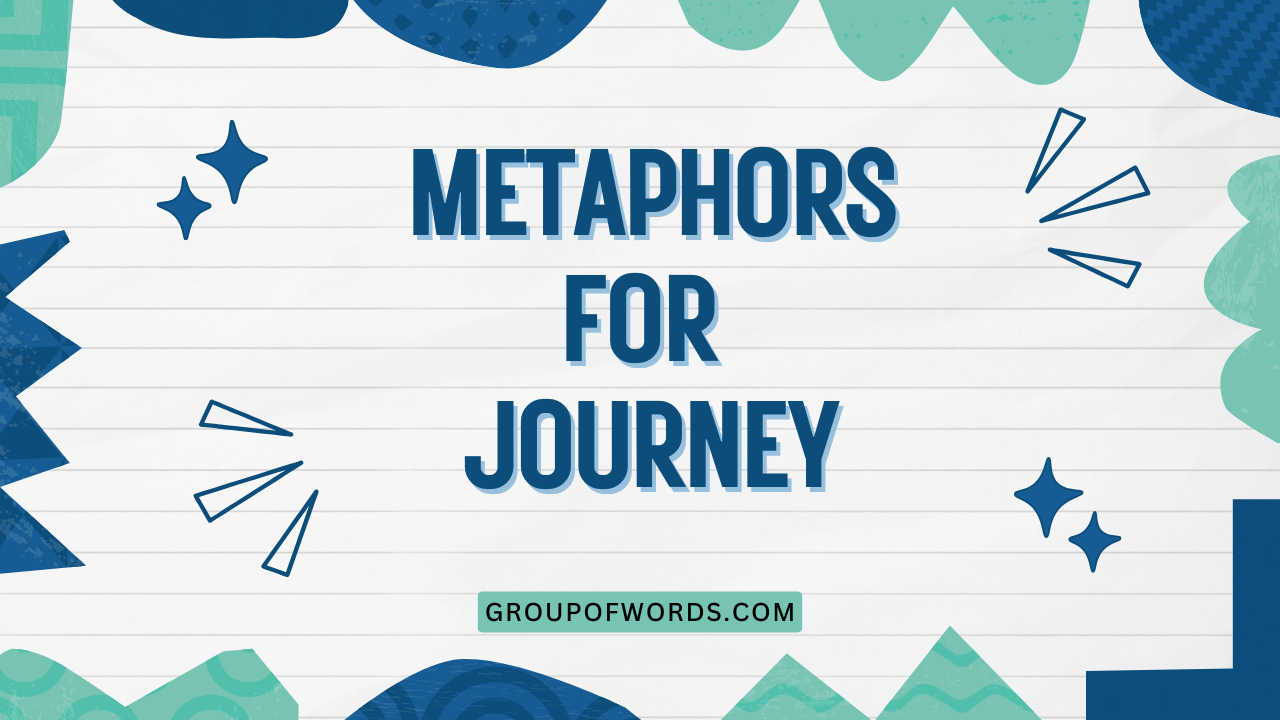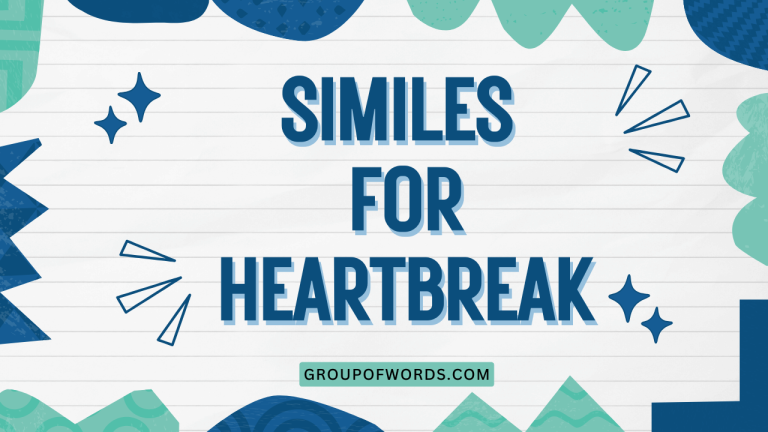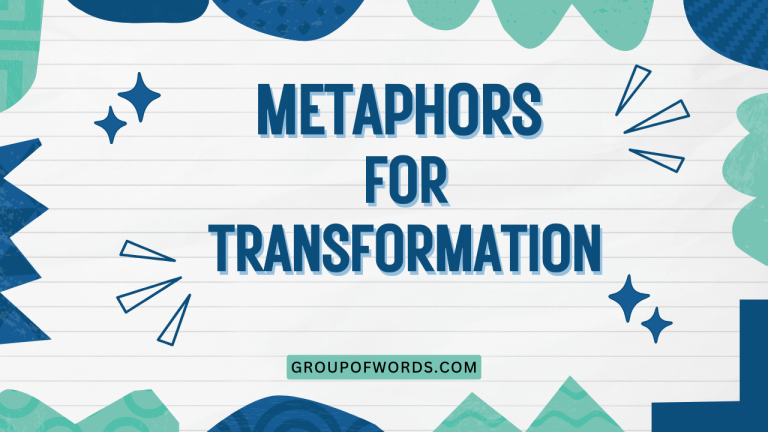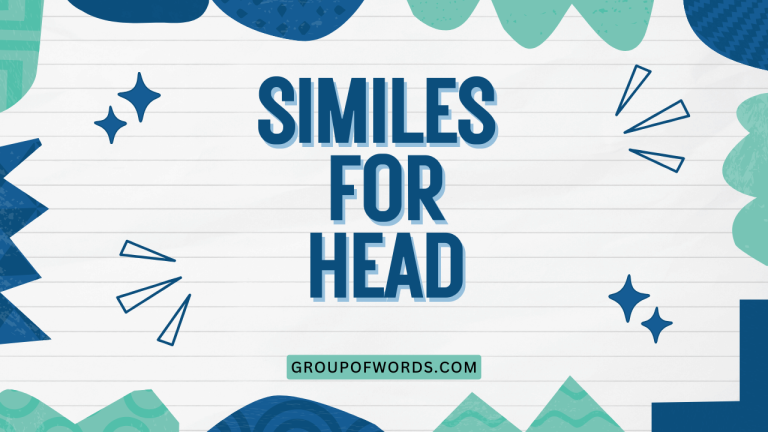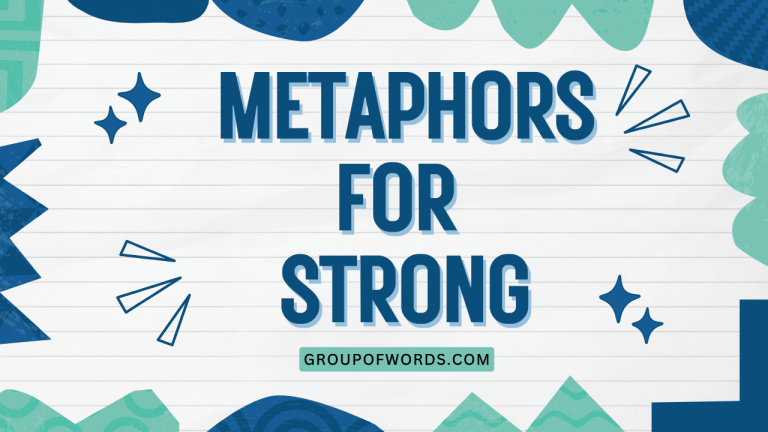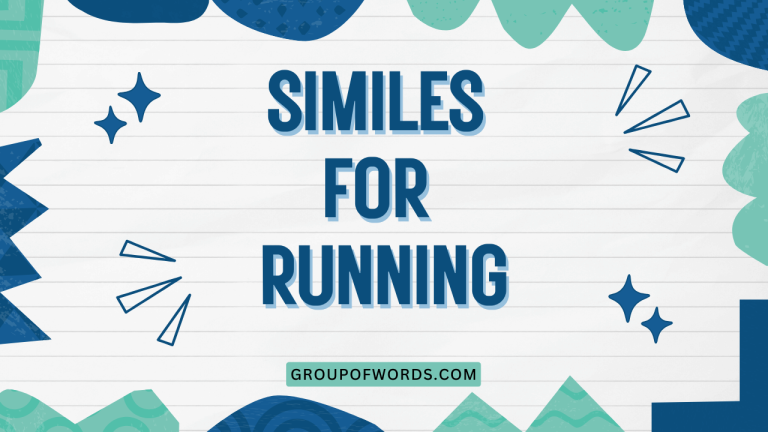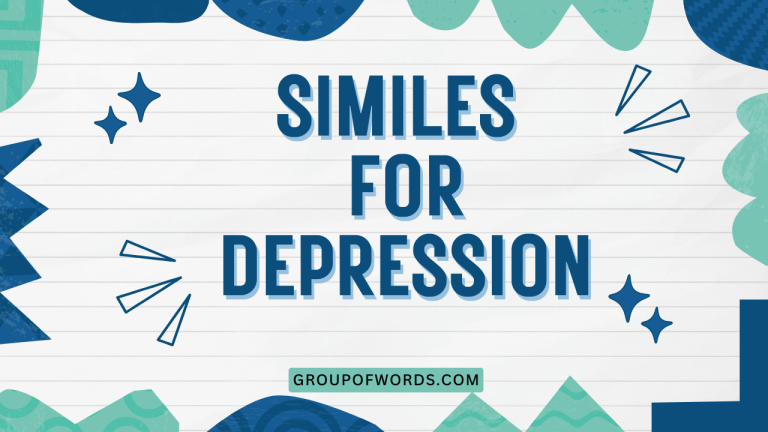Metaphors for Journey: A Comprehensive Guide
Metaphors are powerful tools that enrich our language and understanding. When we talk about life, careers, or even personal growth, we often use the concept of a “journey” as a metaphor.
This allows us to frame complex experiences in relatable and vivid terms. Understanding these metaphors not only enhances our comprehension of English but also provides deeper insights into how we perceive the world.
This article will explore various metaphors for journey, their structures, usage rules, and common mistakes, providing clear examples and exercises to help you master this fascinating aspect of English grammar. This knowledge is beneficial for students, writers, and anyone looking to improve their communication skills and appreciate the nuances of language.
By the end of this guide, you’ll be able to identify, interpret, and effectively use journey metaphors in your own writing and speech.
Table of Contents
- Introduction
- Definition of Metaphors for Journey
- Structural Breakdown
- Types and Categories of Journey Metaphors
- Examples of Journey Metaphors
- Usage Rules for Journey Metaphors
- Common Mistakes with Journey Metaphors
- Practice Exercises
- Advanced Topics
- FAQ
- Conclusion
Definition of Metaphors for Journey
A metaphor for journey is a figure of speech that compares a particular aspect of life, such as a career, relationship, or personal development, to a physical journey. This comparison allows us to understand and describe abstract concepts in more concrete, relatable terms.
The core idea is that life, like a journey, involves movement, progress, challenges, and destinations. These metaphors often utilize vocabulary related to travel, navigation, and exploration to convey deeper meanings about the experience being described.
Classification: Metaphors for journey fall under the broader category of conceptual metaphors, which are fundamental to how we understand the world. They are also a type of figurative language, used to create imagery and convey meaning beyond the literal. These metaphors are pervasive in literature, everyday conversation, and even business communication.
Function: The primary function of a journey metaphor is to provide a framework for understanding complex experiences. By framing something as a journey, we can break it down into manageable stages, identify obstacles, and envision potential outcomes. This makes abstract concepts more accessible and allows us to communicate them more effectively. Furthermore, these metaphors can evoke emotions and create a sense of shared experience.
Contexts: Journey metaphors are used in a wide range of contexts, including:
- Personal narratives: Describing life experiences, challenges, and achievements.
- Motivational speeches: Inspiring listeners to pursue their goals with perseverance.
- Business presentations: Outlining strategic plans and company growth.
- Literary works: Exploring themes of self-discovery, transformation, and the human condition.
- Everyday conversations: Discussing personal growth, career aspirations, and relationship dynamics.
Structural Breakdown
The structure of a journey metaphor typically involves several key elements that contribute to its meaning and effectiveness. Understanding these elements can help you analyze and create compelling journey metaphors.
Source Domain (Journey): This is the concrete concept of a physical journey, which provides the framework for the metaphor. Elements of the source domain include:
- Traveler: The person or entity undertaking the journey (e.g., the individual, the company).
- Path/Road: The course of action or series of events (e.g., career path, life choices).
- Destination: The goal or objective to be achieved (e.g., success, fulfillment).
- Obstacles: Challenges, setbacks, or difficulties encountered along the way (e.g., competition, personal struggles).
- Vehicles/Tools: Resources, skills, or strategies used to navigate the journey (e.g., education, networking).
- Companions: People who provide support, guidance, or assistance (e.g., mentors, friends, family).
Target Domain (Abstract Concept): This is the abstract concept being understood through the lens of the journey metaphor. Examples include:
- Life: The overall experience of living and growing.
- Career: The progression of one’s professional life.
- Learning: The process of acquiring knowledge and skills.
- Relationship: The development and maintenance of interpersonal connections.
- Personal Growth: The process of self-improvement and development.
Mapping: The process of connecting elements from the source domain (journey) to the target domain (abstract concept). For example:
- “Life is a journey” maps the traveler to the individual, the path to life experiences, the destination to fulfillment, and obstacles to challenges.
- “Career is a journey” maps the traveler to the employee, the path to career progression, the destination to professional success, and obstacles to workplace challenges.
Example: “Life is a winding road.”
- Traveler: You
- Path: Winding road
- Destination: Happiness/Fulfillment
- Obstacles: Bumps, turns, and detours along the road.
Types and Categories of Journey Metaphors
Journey metaphors can be categorized based on the specific abstract concept they are used to describe. Here are some common types:
Life as a Journey
This is perhaps the most common type of journey metaphor. It frames life as a continuous process of movement, growth, and discovery.
It emphasizes the idea that life is not just about reaching a destination but also about the experiences and lessons learned along the way.
Career as a Journey
This metaphor views a career as a path with various stages, challenges, and opportunities. It highlights the importance of planning, perseverance, and adaptability in achieving professional goals.
It suggests that a career is not a static entity but a dynamic process of learning and growth.
Learning as a Journey
This metaphor represents the acquisition of knowledge and skills as a process of exploration and discovery. It emphasizes the idea that learning is not just about memorizing facts but also about developing critical thinking skills and expanding one’s understanding of the world.
It views challenges as learning opportunities.
Relationship as a Journey
This metaphor describes the development and maintenance of interpersonal connections as a shared path. It highlights the importance of communication, compromise, and mutual support in navigating the ups and downs of a relationship.
It also suggests that relationships require effort and commitment to thrive.
Personal Growth as a Journey
This metaphor frames self-improvement and development as a process of transformation and discovery. It emphasizes the idea that personal growth involves facing challenges, overcoming obstacles, and expanding one’s comfort zone.
It views setbacks as opportunities for learning and growth.
Examples of Journey Metaphors
Here are examples of journey metaphors, categorized by the concept they represent. Each table provides a range of examples to illustrate the diverse ways in which these metaphors can be used.
Life as a Journey: Examples
The following table presents examples of how ‘Life’ is metaphorically described as a journey, highlighting different aspects and experiences associated with it.
| Metaphor | Interpretation |
|---|---|
| Life is a rollercoaster. | Life has its ups and downs, with moments of excitement and fear. |
| Life is a marathon, not a sprint. | Life requires endurance and perseverance, not just quick bursts of effort. |
| Life is a winding road. | Life is full of unexpected twists and turns. |
| Life is a voyage of discovery. | Life is an opportunity to learn and explore new things. |
| Life is a climb, but the view is great. | Life can be challenging, but the rewards are worth the effort. |
| Life is a journey of a thousand miles. | Every journey, no matter how big, starts with a single step. |
| Life is a challenging hike. | You must push through and persevere to reach the top. |
| Life is a road with many forks. | You must make choices for the path you’ll take. |
| Life is a long and dusty trail. | It takes time, patience, and persistence. |
| Life is a trip to the unknown. | It is full of surprises, both good and bad. |
| Life is a scenic route. | You should take time to enjoy the experience. |
| Life is a bumpy ride. | You must be prepared for the unexpected. |
| Life is a race against time. | You must make the most of every moment. |
| Life is a pilgrimage. | A sacred journey with a goal. |
| Life is a ship setting sail. | Embarking on a new adventure. |
| Life is a pathway through the woods. | Navigating challenges and uncertainties. |
| Life is an expedition into the unknown. | Exploring uncharted territories. |
| Life is a quest for meaning. | Seeking purpose and significance. |
| Life is a carousel ride. | Experiences come and go in cycles. |
| Life is a walk in the park. | Enjoying simple pleasures along the way. |
| Life is a river flowing to the ocean. | A constant flow towards a final destination. |
| Life is a mountain to climb. | Overcoming challenges to reach new heights. |
| Life is a road trip with friends. | Sharing experiences and creating memories. |
| Life is a treasure hunt. | Discovering hidden gems and valuable lessons. |
| Life is a dance along a winding path. | Moving gracefully through ups and downs. |
| Life is a voyage on a vast ocean. | Navigating uncertainties and vast possibilities. |
| Life is a trek through uncharted forests. | Exploring unfamiliar territory with courage. |
Career as a Journey: Examples
The following table illustrates how ‘Career’ is often portrayed as a journey, focusing on professional growth, challenges, and achievements.
| Metaphor | Interpretation |
|---|---|
| My career has been a long and winding road. | My career path has had many unexpected turns and changes. |
| She’s climbing the corporate ladder. | She is advancing in her career, moving up the ranks. |
| He’s reached a crossroads in his career. | He is at a point where he needs to make a significant decision about his career path. |
| I’m navigating the challenges of my new role. | I am dealing with the difficulties and complexities of my new job. |
| She’s on the fast track to success. | She is progressing rapidly in her career. |
| He’s charting a new course for his career. | He is making significant changes to his career path. |
| She’s paving the way for future leaders. | She is setting an example and creating opportunities for others. |
| He’s hit a roadblock in his career. | He has encountered an obstacle that is preventing him from progressing. |
| She’s embarking on a new career adventure. | She is starting a new and exciting chapter in her professional life. |
| He’s on a career trajectory towards management. | His career is progressing in a direction that will lead to a management position. |
| She’s steering her career towards a more creative field. | She’s making changes to work in a more creative role. |
| He’s mapping out his career goals. | He is planning what he wants to achieve in his career. |
| She’s on a mission to reach the top of her profession. | She’s determined to be successful. |
| He’s treading carefully on his career path. | He’s being cautious to avoid mistakes. |
| She’s taking a detour in her career to gain new skills. | She’s making a temporary change. |
| He’s climbing the mountain of success in his industry. | He’s overcoming challenges to achieve success. |
| She’s sailing smoothly through her career advancement. | She’s having an easy and successful journey. |
| He’s on a journey of professional development. | He’s working to improve his skills. |
| She’s traveling the path of entrepreneurship. | She’s starting her own business. |
| He’s reached the summit of his career. | He’s achieved the highest level of success. |
| She’s charting a course for her career. | She’s planning her future steps. |
| He’s navigating the waters of the corporate world. | He’s dealing with challenges in his career. |
| She’s on a journey of self-discovery through her work. | She’s learning about herself. |
| He’s paving the way for his own success. | He’s creating opportunities. |
| She’s steering clear of career pitfalls. | She’s avoiding mistakes. |
| He’s embarking on a new career chapter. | He’s starting a new phase. |
Learning as a Journey: Examples
The following table provides examples of how ‘Learning’ can be thought of as a journey, emphasizing exploration, discovery, and the acquisition of knowledge.
| Metaphor | Interpretation |
|---|---|
| Learning is a journey of discovery. | Learning involves exploring new ideas and uncovering hidden knowledge. |
| The path of learning is not always easy. | Learning can be challenging. |
| He’s embarking on a new learning adventure. | He is starting a new and exciting learning experience. |
| She’s navigating the complexities of quantum physics. | She is dealing with the difficult concepts of quantum physics. |
| The road to knowledge is paved with hard work. | Acquiring knowledge requires effort and dedication. |
| He’s climbing the mountain of academic achievement. | He is working hard to achieve academic success. |
| She’s on a quest for knowledge. | She is actively seeking to expand her understanding. |
| He’s charting a course through the sea of information. | He is navigating the vast amount of available information. |
| She’s exploring the uncharted territories of AI. | She is delving into the unknown aspects of artificial intelligence. |
| He’s on a journey to master a new language. | He is working to become proficient in a new language. |
| She’s traversing the landscape of mathematical concepts. | She is exploring the different areas of mathematics. |
| He’s mapping out his learning goals. | He is planning what he wants to learn. |
| She’s on a mission to understand the universe. | She’s determined to learn about the universe. |
| He’s treading the path of scientific discovery. | He’s making progress in scientific exploration. |
| She’s taking a detour to explore a different field of study. | She’s temporarily changing her focus. |
| He’s climbing the ladder of expertise in his field. | He’s improving his skills. |
| She’s sailing smoothly through her academic journey. | She’s having an easy and successful experience. |
| He’s on a journey of intellectual growth. | He’s working to improve his knowledge and skills. |
| She’s traveling the path of lifelong learning. | She’s committed to continuous learning. |
| He’s reached a milestone in his learning journey. | He’s achieved a significant goal. |
| She’s charting a course for her educational journey. | She’s planning her future studies. |
| He’s navigating the waters of academic research. | He’s dealing with challenges in his research. |
| She’s on a journey of self-discovery through her studies. | She’s learning about herself through her studies. |
| He’s paving the way for his own academic success. | He’s creating opportunities for his success. |
| She’s steering clear of academic pitfalls. | She’s avoiding mistakes. |
| He’s embarking on a new educational chapter. | He’s starting a new phase in his education. |
Usage Rules for Journey Metaphors
Using journey metaphors effectively requires attention to several key rules. These rules ensure that the metaphor is clear, relevant, and impactful.
Clarity: The metaphor should be easily understood. Avoid using overly complex or obscure language that could confuse the reader or listener. The connection between the journey and the abstract concept should be clear.
Relevance: The metaphor should be relevant to the context and the audience. Consider the specific situation and the background knowledge of your audience when choosing a metaphor. A metaphor that resonates with one audience may not be effective with another.
Consistency: Maintain consistency throughout the metaphor. Avoid mixing different types of journeys or using conflicting imagery. Inconsistent metaphors can be confusing and weaken the overall impact.
Originality: While common journey metaphors can be effective, strive for originality to make your writing or speech more engaging. Consider using fresh and unique imagery that captures the essence of the abstract concept in a new and compelling way.
Appropriateness: Ensure that the metaphor is appropriate for the tone and purpose of the communication. Avoid using lighthearted or humorous metaphors when discussing serious or sensitive topics. Choose metaphors that align with the overall message and desired emotional response.
Avoid Clichés: While journey metaphors are common, try to avoid overused expressions that have lost their impact. Phrases like “life is a journey” or “climbing the ladder of success” can sound generic and uninspired. Instead, try to find more creative and specific ways to express the same ideas.
Common Mistakes with Journey Metaphors
Even experienced writers and speakers can make mistakes when using journey metaphors. Here are some common errors to avoid:
Mixed Metaphors: Combining two or more inconsistent metaphors in a single statement.
- Incorrect: “Life is a rollercoaster, and you need to keep your eye on the ball.” (Mixing the rollercoaster metaphor with a sports metaphor.)
- Correct: “Life is a rollercoaster; hold on tight for the ups and downs.”
Overused Metaphors: Relying on clichés that have lost their impact.
- Incorrect: “Life is a journey, and it’s all about the destination.” (Overused and generic.)
- Correct: “Life is an expedition, full of unexpected discoveries and challenges that shape who we become.”
Inappropriate Tone: Using a metaphor that is not suitable for the context or audience.
- Incorrect: “Dealing with grief is like climbing Mount Everest; it’s a real hoot!” (Trivializing a serious topic.)
- Correct: “Dealing with grief is like climbing a steep mountain; it’s a difficult and arduous process that requires strength and resilience.”
Lack of Clarity: Using a metaphor that is too abstract or confusing for the audience to understand.
- Incorrect: “My career is a fractal journey through the quantum foam.” (Too abstract and technical.)
- Correct: “My career has been a journey of constant learning and adaptation, with each experience building upon the last.”
Inconsistency: Shifting between different aspects of the journey metaphor without a clear connection.
- Incorrect: “Life is a marathon, but sometimes you need to sprint to get ahead.” (Conflicting imagery of endurance and speed.)
- Correct: “Life is a marathon, requiring consistent effort and perseverance over the long haul.”
Practice Exercises
Test your understanding of journey metaphors with these exercises. For each question, identify the journey metaphor and explain its meaning.
Exercise 1: Identifying Journey Metaphors
| # | Sentence | Answer |
|---|---|---|
| 1 | Her career took a detour when she decided to go back to school. | The career is seen as a road, and going back to school is taking a detour. |
| 2 | The path to success is not always a straight line. | Success is a destination, and the path to it is not always direct. |
| 3 | Learning a new language is like climbing a mountain. | Learning a new language is seen as difficult and challenging, like climbing a mountain. |
| 4 | Their relationship has hit a few bumps in the road. | The relationship is a road, and the bumps represent challenges or difficulties. |
| 5 | Personal growth is a journey of self-discovery. | Personal growth is a process of exploring and understanding oneself. |
| 6 | Navigating the corporate world can be tricky. | The corporate world is a sea. |
| 7 | She’s on the right track to success. | Success is a destination and she is on the right way to get there. |
| 8 | The road to recovery is long. | Recovery is a destination. |
| 9 | He’s reached a crossroads in his life. | Life is a journey and he must make a decision. |
| 10 | Life is a series of adventures. | Life is full of exciting events. |
Exercise 2: Completing Journey Metaphors
Fill in the blanks with appropriate words or phrases to complete the journey metaphors.
| # | Sentence | Answer |
|---|---|---|
| 1 | His career is on the fast ________ to success. | track |
| 2 | She’s ________ a new course for her life. | charting |
| 3 | Learning is a ________ of discovery. | journey |
| 4 | Their relationship has ________ a new chapter. | begun |
| 5 | Personal growth is a ________ to a better self. | path |
| 6 | I am ________ the way to success. | paving |
| 7 | She’s ________ a new career. | starting |
| 8 | Learning is a ________. | process |
| 9 | Life is a ________ of adventures. | series |
| 10 | Our company is ________ new routes. | exploring |
Exercise 3: Creating Your Own Journey Metaphors
Create your own journey metaphors for the following concepts.
| # | Concept | Example Answer |
|---|---|---|
| 1 | Friendship | Friendship is a shared hike, where you support each other through tough climbs and celebrate the beautiful views together. |
| 2 | Creativity | Creativity is a voyage into uncharted waters, where you explore new ideas and discover hidden treasures. |
| 3 | Parenting | Parenting is guiding a young explorer through a dense forest, helping them navigate obstacles and discover their own path. |
| 4 | Teamwork | Teamwork is like rowing a boat together, each person contributing their strength to reach a common destination. |
| 5 | Innovation | Innovation is a journey to the future. |
| 6 | Failure | Failure is a detour on the way to success. |
| 7 | Success | Success is reaching the summit. |
| 8 | Education | Education is a journey of discovery. |
| 9 | Love | Love is like walking hand in hand. |
| 10 | Change | Change is like setting sail in uncharted waters. |
Advanced Topics
For advanced learners, exploring the philosophical and psychological dimensions of journey metaphors can provide deeper insights. Here are some advanced topics to consider:
The Hero’s Journey: A common narrative archetype in literature and mythology, where the protagonist embarks on a transformative journey, faces challenges, and returns with new knowledge or abilities. Understanding this archetype can help you analyze and create compelling stories.
Existentialism and the Journey of Life: Existentialist philosophy often views life as a journey of self-creation, where individuals are responsible for defining their own meaning and purpose. Exploring this perspective can provide a deeper understanding of the human condition.
The Psychology of Metaphors: Metaphors can influence our thoughts, emotions, and behaviors. Understanding how metaphors shape our perceptions can help you communicate more effectively and influence others.
Cultural Variations in Journey Metaphors: Different cultures may have different ways of conceptualizing journeys. Exploring these variations can broaden your understanding of cultural perspectives and communication styles.
FAQ
Here are some frequently asked questions about journey metaphors:
Q1: What is the difference between a metaphor and a simile?
A: A metaphor directly equates two things, while a simile uses “like” or “as” to make a comparison. For example, “Life is a journey” is a metaphor, while “Life is like a journey” is a simile. Metaphors are generally considered stronger and more direct.
Q2: How can I make my journey metaphors more creative?
A: To make your journey metaphors more creative, try to avoid clichés and think outside the box. Consider using unique and specific imagery that captures the essence of the abstract concept in a new and compelling way. Draw inspiration from your own experiences, observations, and imagination.
Q3: Can I use journey metaphors in formal writing?
A: Yes, journey metaphors can be used in formal writing, but it’s important to use them judiciously and appropriately. Choose metaphors that are clear, relevant, and consistent with the tone and purpose of the writing. Avoid using overly casual or humorous metaphors in formal contexts.
Q4: How do I avoid mixed metaphors?
A: To avoid mixed metaphors, carefully consider the imagery and associations of each metaphor you use. Ensure that the metaphors are consistent and do not create conflicting or nonsensical images. If you’re unsure, try visualizing the metaphors in your mind to see if they make sense together.
Q5: What are some common themes in journey metaphors?
A: Some common themes in journey metaphors include progress, challenges, obstacles, destinations, and transformation. These themes reflect the universal human experiences of growth, learning, and self-discovery.
Q6: How can I use journey metaphors to motivate others?
A: Journey metaphors can be powerful tools for motivation because they provide a framework for understanding complex challenges and envisioning potential outcomes. Use metaphors that inspire hope, resilience, and perseverance. Emphasize the importance of learning from setbacks and celebrating small victories along the way.
Q7: How can understanding journey metaphors improve my communication skills?
A: Understanding journey metaphors can enhance your communication skills by allowing you to express abstract ideas in more concrete and relatable terms. This can make your writing and speech more engaging, memorable, and persuasive. Additionally, it can help you connect with your audience on an emotional level.
Q8: How do I know if a journey metaphor is effective?
A: An effective journey metaphor should be clear, relevant, and impactful. It should resonate with your audience and help them understand the abstract concept in a new and meaningful way. If the metaphor is confusing, irrelevant, or cliché, it may not be effective.
Conclusion
Metaphors for journey offer a powerful lens through which to understand and articulate life’s complex experiences. By framing abstract concepts as journeys, we can make them more accessible, relatable, and meaningful.
This comprehensive guide has explored the definition, structure, types, usage rules, and common mistakes associated with journey metaphors. Through numerous examples and practice exercises, you’ve gained the skills to identify, interpret, and effectively use these metaphors in your own writing and speech.
Mastering journey metaphors enhances your communication skills, broadens your understanding of language, and provides deeper insights into the human experience. Remember to strive for clarity, relevance, consistency, originality, and appropriateness in your use of these metaphors.
By doing so, you can unlock the full potential of this powerful linguistic tool and enrich your communication in countless ways.
